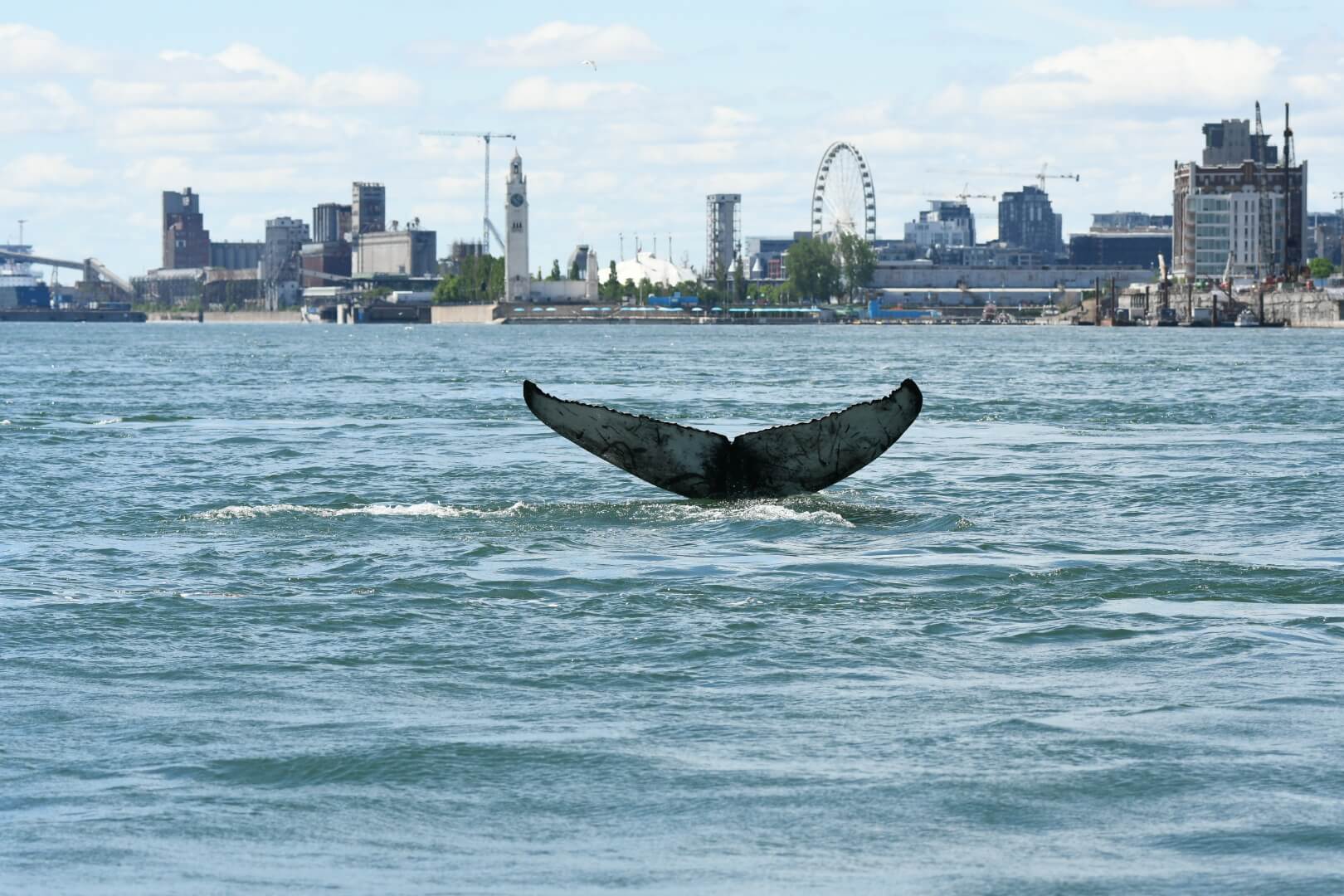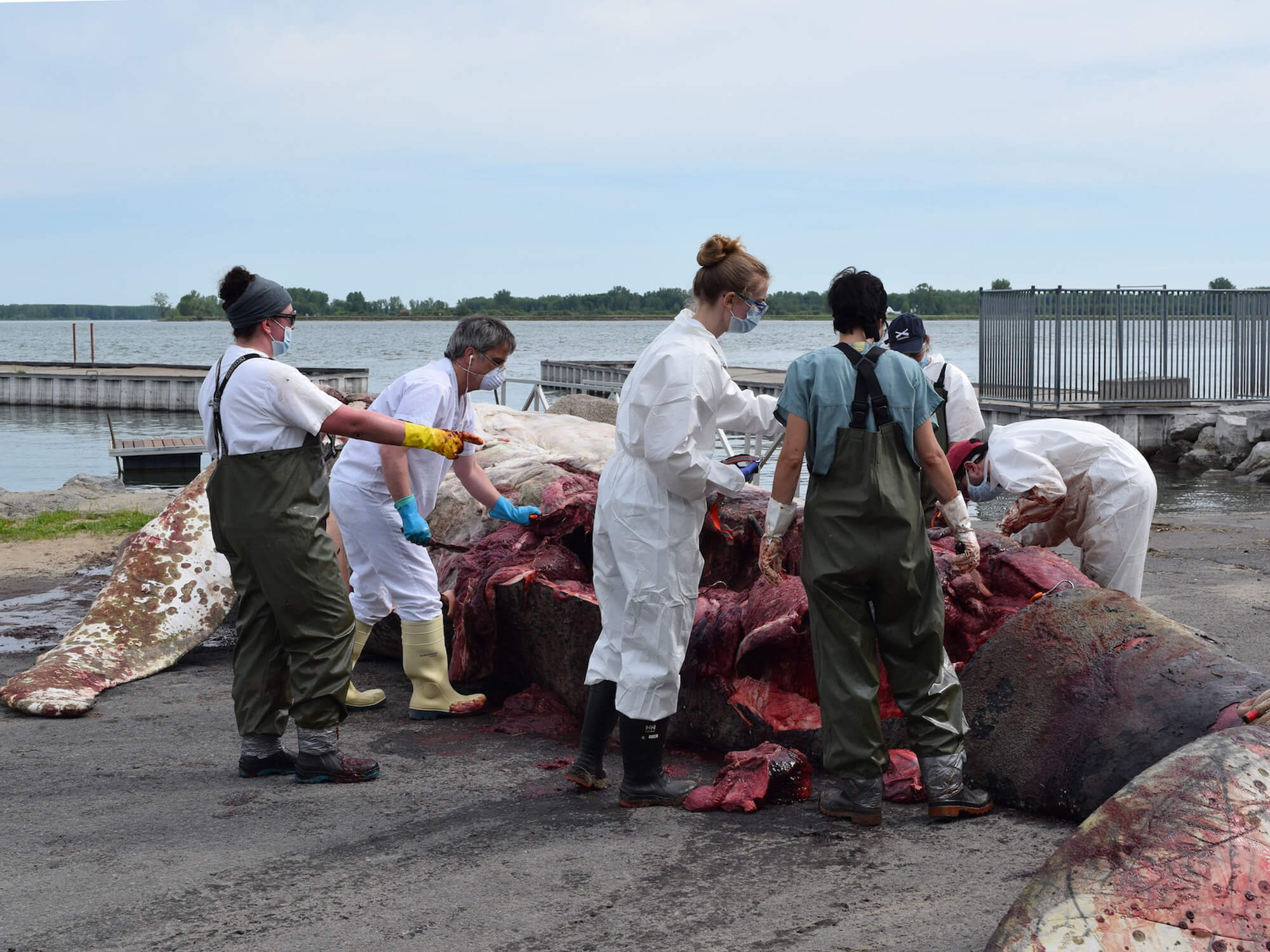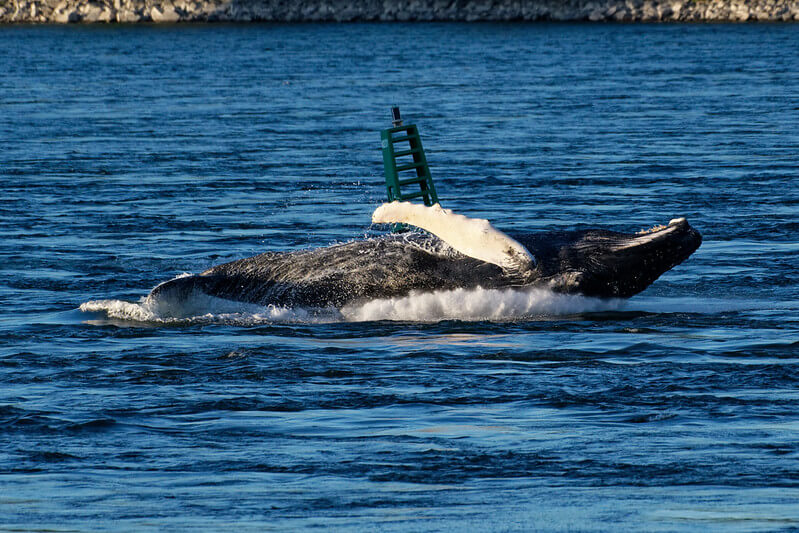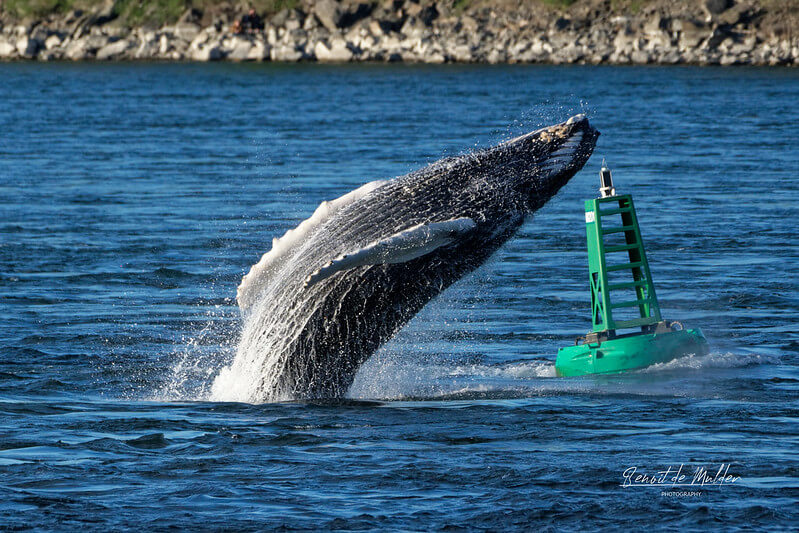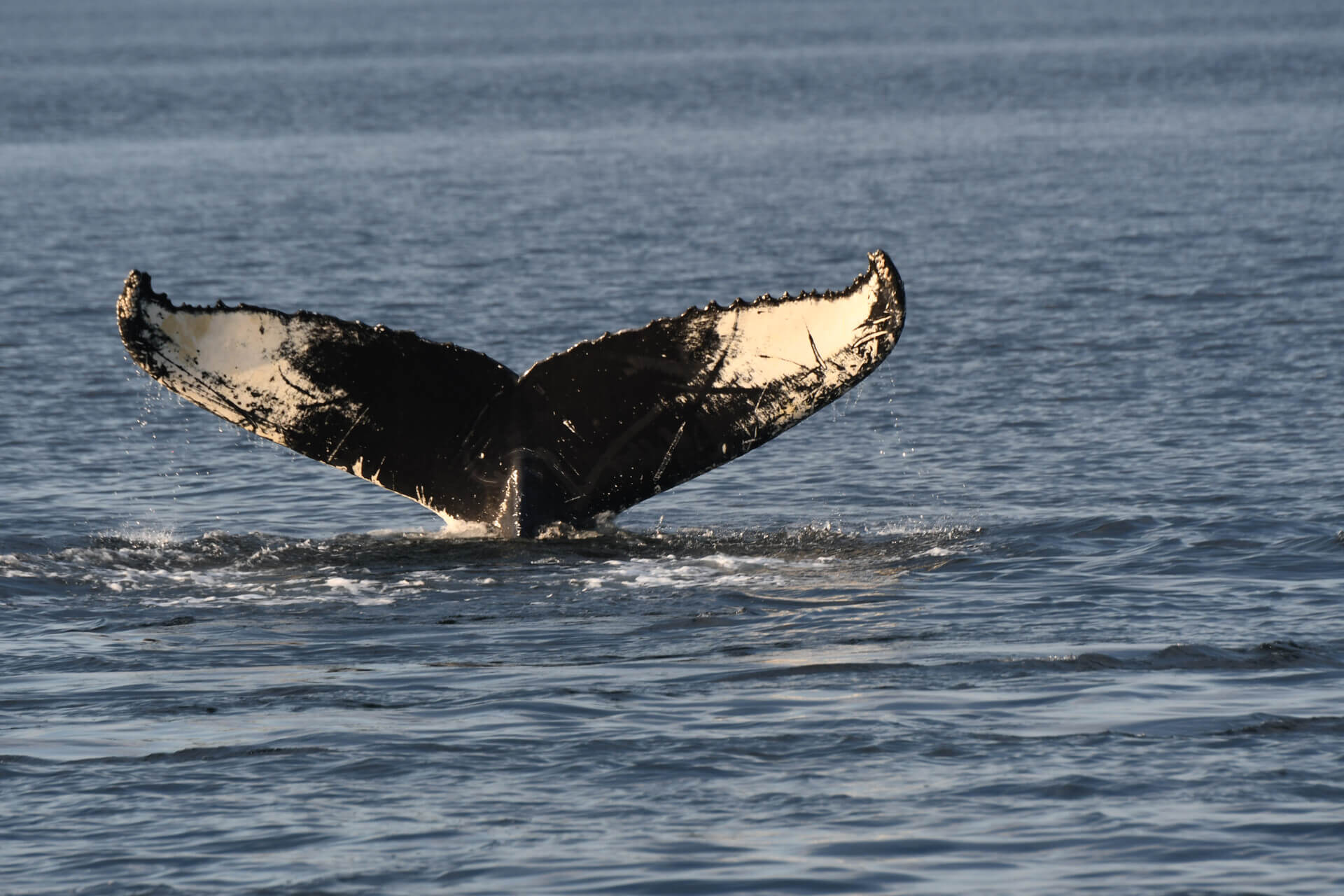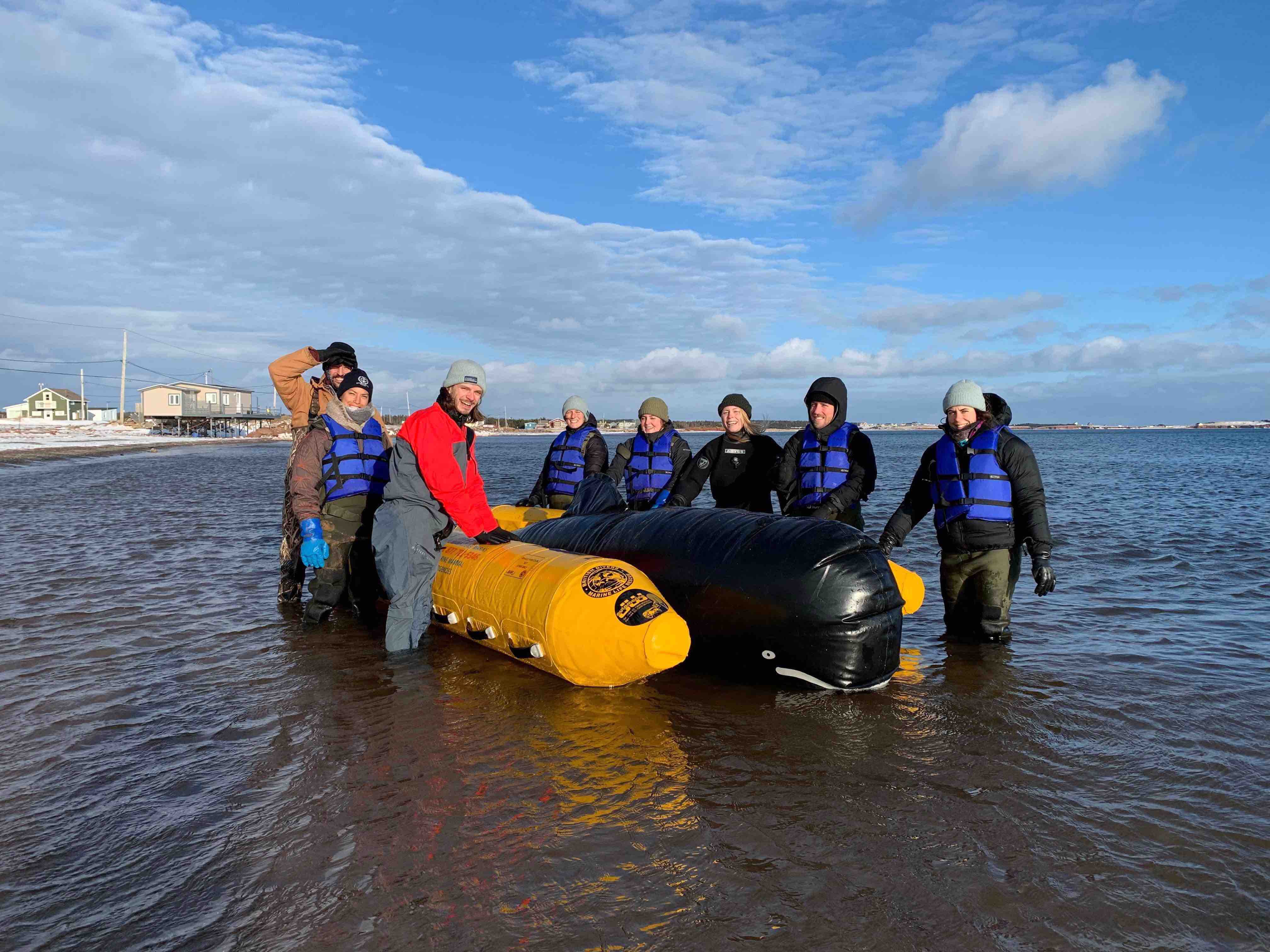Despite having analyzed cross-referenced data on the body condition, behaviour and the carcass of a female humpback that visited Montréal, experts from the Centre québécois sur la santé des animaux sauvages (website in French) and the Quebec Marine Mammal Emergency Response Network have been unable to pinpoint the cause of the animal’s death. This is the main finding of the incident report released on January 19.
“Although a collision with a boat was initially suspected, the autopsy performed on this whale could not confirm this hypothesis. The cause of death of this whale therefore remains uncertain. One possible explanation is that its prolonged exposure to fresh water might have impaired its physiological functions,” explains the veterinarian who oversaw the necropsy, Stéphane Lair.
In any case, he and his team suspect that the mortality was sudden, as the animal did not show any signs of becoming weaker or noticeably thinner in the days preceding its death. Its spectacular surface activities (frequent breaching and slapping of the tail and pectoral fins) suggested that the young animal was physically fit.
On the other hand, one of the things that deteriorated over the course of the humpback’s stay was the condition of its skin. At the time of the necropsy, a good portion of the animal’s back was covered with fungi (oomycetes), with skin lesions in some places. The extended stay in fresh water might have affected its health in the form of a skin infection or an electrolyte imbalance, causing the central nervous system to fail and thereby contributing to its death. However, the analyses carried out were unable to confirm or infirm these hypotheses.
A mysterious journey
What brought this two- to four-year-old female so far from her peers in the St. Lawrence? The mystery persists. However, the role of an underlying disease appears less likely now that the analysis has been completed. The theory whereby the animal arrived in pursuit of prey and did not know how to leave due to its lack of experience is also a possibility. The hypothesis of exploratory behaviour – which is observed in juveniles of several species of mammals – is the one experts are gravitating toward. The growing humpback whale population may also have contributed to increased competition in the species’ feeding grounds and prompted this individual to venture out to explore new territories.
“The exceptional adventure of a humpback whale with particularly dynamic behaviour during the doldrums of the lockdown attracted a lot of attention. Despite the challenges of the pandemic, significant and concerted monitoring efforts were made, both on shore and on the water, to document the whale’s situation and ensure its safety. This visit reminded us that we share the St. Lawrence with fragile giants and highlighted a number of cohabitation issues such as disturbance, noise pollution and the risk of collision,” notes Robert Michaud, coordinator of the Quebec Marine Mammal Emergency Response Network.
“This humpback’s visit to Montréal shows that much remains to be discovered in terms of the ecology and behaviour of this species, as well as how best to respond when one of these animals is in difficulty. It is essential that we increase our knowledge in order to better understand how the profound modification of the ecosystem is affecting this species,” concludes Stéphane Lair.
Recap of events
From May 24 to June 9, a humpback whale attracted attention when it ventured well beyond its usual range. Seen successively in Saint-Irénée, Québec City, Portneuf and Trois-Rivières, the humpback ultimately ended up in Montréal (Île Sainte-Hélène), where it spent seven days. During its stay in Montréal, the whale was closely monitored both on the water and from shore by the team and volunteers of the Quebec Marine Mammal Emergency Response Network. Teams from Montréal’s Police Department and the Canadian Coast Guard worked to prevent collisions and ensure that the regulatory distance between boats and the whale was respected. On June 7, when observations resumed around Île Sainte-Hélène, the whale is nowhere to be found. She may have been spotted off Pointe-aux-Trembles on this day, but attempts to relocate her are unsuccessful. Early in the morning of June 9, a carcass is spotted by the captain of a commercial vessel. On June 10, the carcass is towed to the docks of Sainte-Anne-de-Sorel for analysis. Given the carcass’s state of decay, veterinarians believe the animal died on or around June 7.


